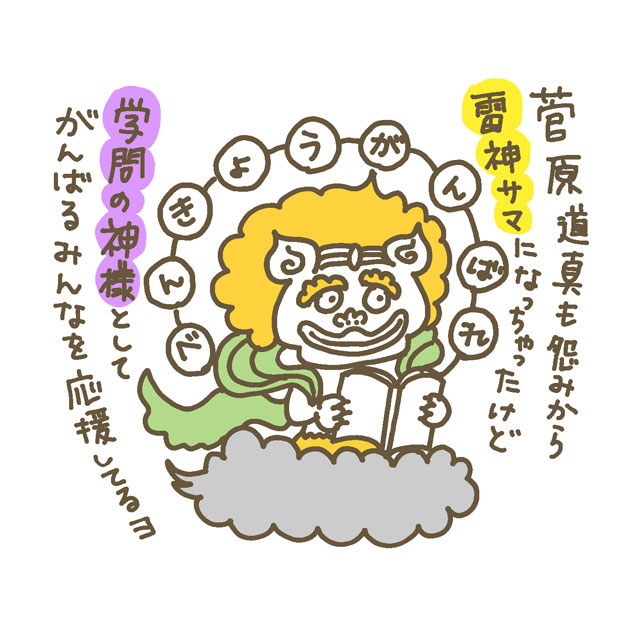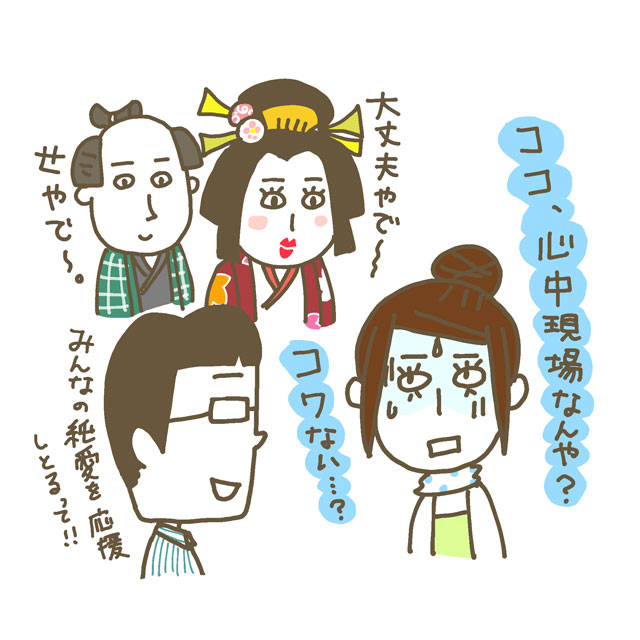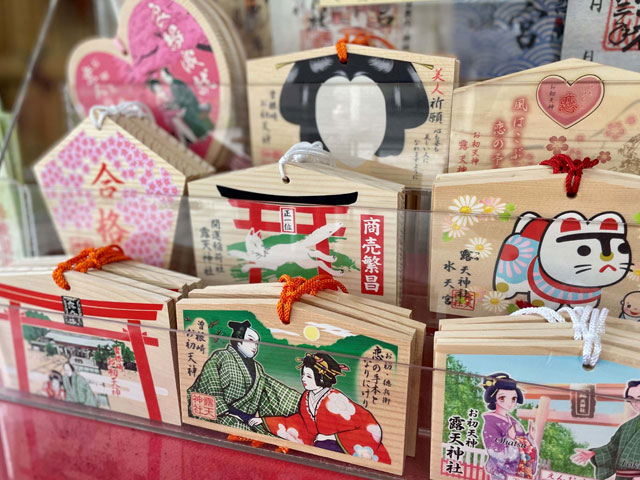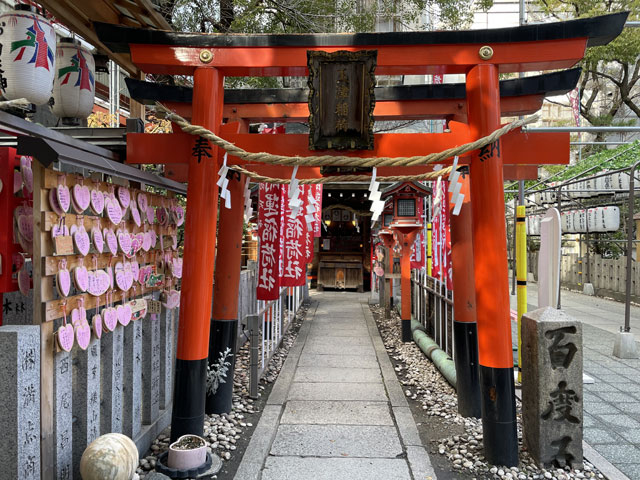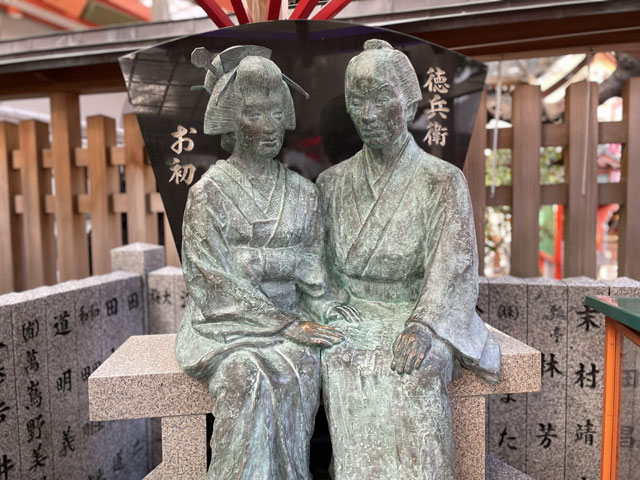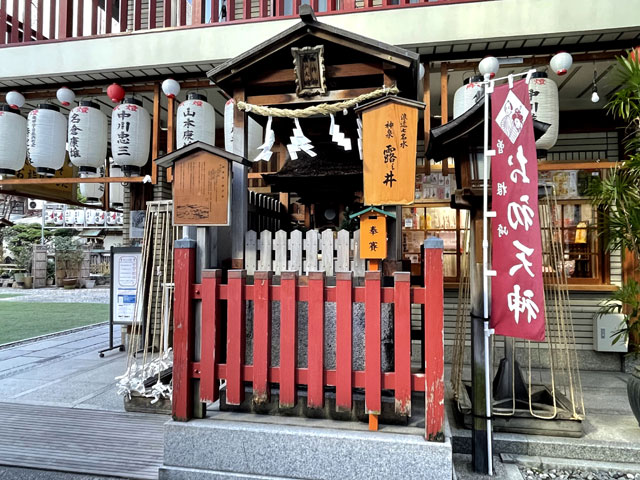Tsuyuten Shrine is more interesting if you learn about the ancient past
Tsuyuten Shrine is the center of prayer to local gods in Sonezaki, Umeda, and is known as a sanctuary for lovers. In the past, the neighborhood was actually a solitary island in Osaka Bay. The origin of Tsuyuten Shrine lies in Sumiyoshi Sumichisone Shrine, a site related to the Naniwa Yasoshima Festival, the oldest celebration in Japan. The reason it continues to enchant so many people down to this day is not simply its history of love.
Bringing luck to all aspects of daily life!
The best power spot in the city
Ohatsu Tenjin is a very popular spot for matchmaking. However, because it is also home to all manner of divine virtues such as recovery from illness, prosperity in business, and learning, thanks to enshrined gods Sukunahikona no Okami, Onamuchi no Okami, Amaterasu Sumeokami, Toyoumehimeno no Okami, and Sugawara no Michizane, it is the best power spot for granting nearly any kind of wish.
The tragic story of “The Love Suicides at Sonezaki,” a model of love
Tokubei, a clerk for a soy sauce merchant, was in love with Ohatsu, a prostitute from Dojima Shinchi. Tokubei angered his employer when her refused an offer of marriage from another woman and then tricked by a friend out of the money he was to return to his employer, losing his means of living. In despair, he and Ohatsu tied themselves to trees in the Tsuyunotenjin Forest where they committed suicide.
Dramatist Chikamatsu Monzaemon wrote a joruri puppet drama based on a double suicide that actually occurred on the grounds of Tsuyuten Shrine in 1703, which became an unprecedented hit. The pure, heartrending bond between the two became a model of love for others, and the shrine was called Ohatsu Tenjin after the heroine of the story.
Three big breaks at Ohatsu Tenjin
The first big break was the first performance of “The Love Suicides at Sonezaki” in 1703. Although it was a popular drama, a number of double suicides where the victims pledged their undying love to one another troubled the Shogunate, which banned such performances in 1722.
Then, 250 years later in 1953, the story was revived in kabuki performances. Sakata Tojuro (Nakamura Senjaku the Second at that time) played the role of Ohatsu, and spent his life pursuing Kamigata Kabuki, a style of the performing art practiced in Kyoto and Osaka. Breaking away from conventional wisdom that female roles must follow male roles, his performance where Ohatsu takes Tokubei’s hand on the stage passage became a hot topic, resulting in the play becoming an instant hit. The idea of a woman leading a man of her own will resonated with women of the time who were working to empower females in society. The drama was performed as a joruri puppet show two years later, thereby reviving an Edo period masterpiece in Kamigata Bunraku theater. Today, the shrine is popular among youngsters as a lovers’ sanctuary and offers a wide selection of votive plaques and amulets for matchmaking.
Kaiun Inari Shrine
is also popular among women!
Kaiun Inari Shrine, located nearby the bronze statue of Ohatsu and Tokubei, is popular among women for as a place to wish for beauty and beautiful skin. The four deities enshrined here are Tamatsu Okami, Tenshin Okami, Yuzu Okami, and Isoshima Okami. It originated when the nearby inari shrine was relocated to the grounds of the Tsuyuten Shrine the following year due to the Great Kita Fire of 1909. In the past, many votive plaques with pictures of catfish were hung here with the wish of curing skin diseases.



